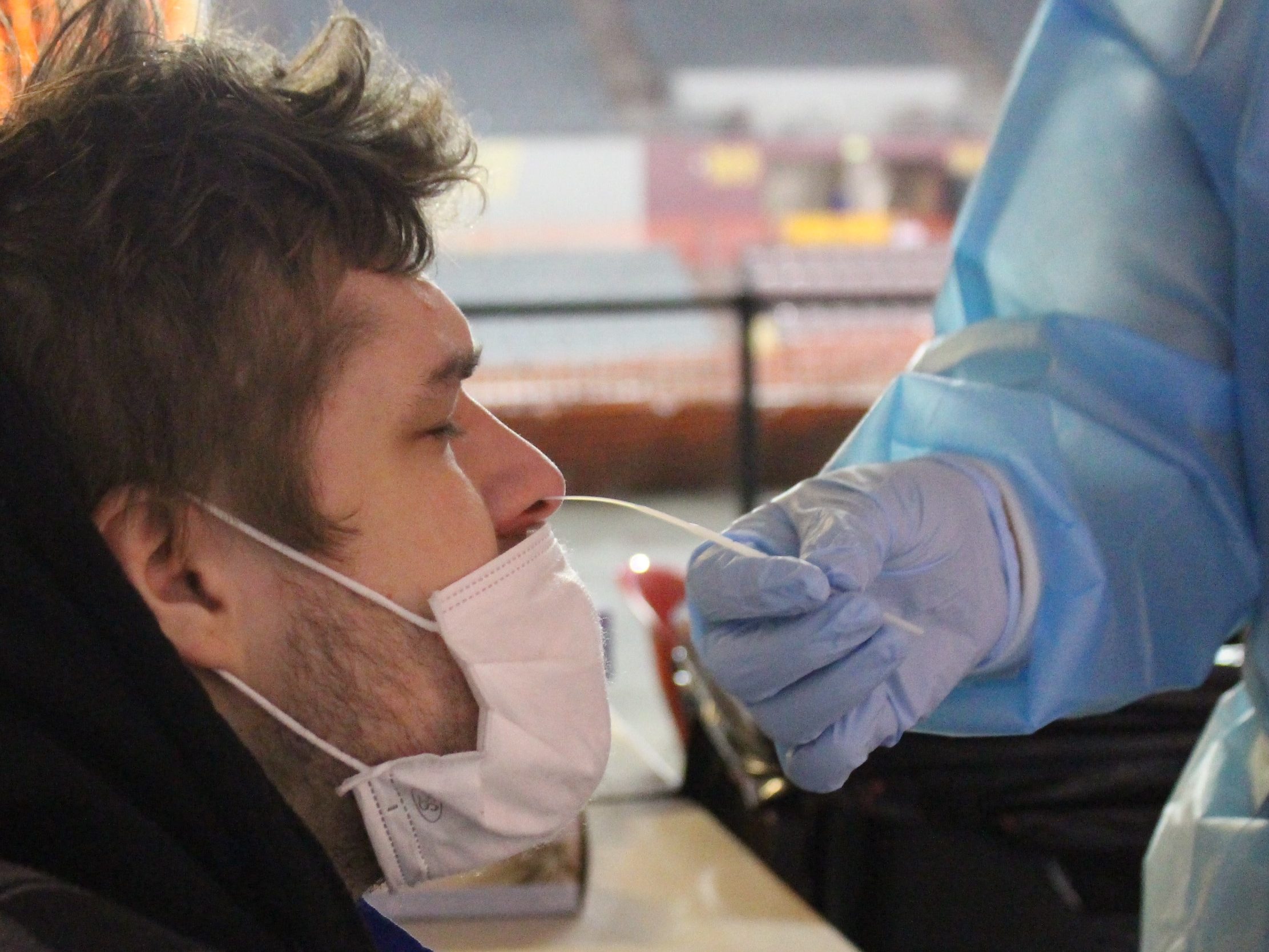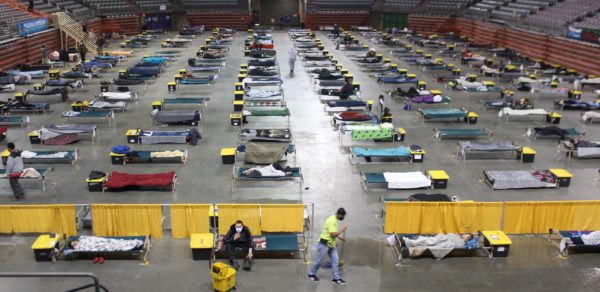
Despite fears that homeless shelters would become centers of COVID-19 spread, the Sullivan Arena shelter in Anchorage has kept rates of disease low after almost a year in operation.
Safety precautions and the layout of the 400-person shelter have even become a model for others around the country.
“They’ve done an amazing job at utilizing every single one of the public health measures,” said Dr. Courtney Pladsen, director of quality improvement for the National Healthcare for the Homeless Council in Portland, Maine.
Those measures include a robust, regular testing regime, strict rules about masking, and the well-ventilated open layout of the shelter. Pladsen said many other large shelters around the country have experienced large outbreaks that have infected dozens or hundreds of people at once.
Pladsen said a majority of shelters around the country still don’t have regular, weekly COVID-19 testing. The Sullivan shelter conducts testing for clients who want it once a week. And it started in May, before wide-scale testing was available around the city.
On Tuesday morning, testers finished 277 tests, representing nearly three-fourths of the shelter population. Of those, only one test came back positive.
Kim Blythe has been a client at the shelter for several weeks, and said she likes to get tested for her own peace of mind, but she doesn’t know anyone who has tested positive.
“I feel pretty safe, it’s pretty secure here,” she said. “I haven’t seen a COVID case since I’ve been here.”
Weekly testing numbers varied throughout the summer and fall as the pandemic surged around Alaska. But even after one anomalous week with 34 positive tests, cases never exploded. Managers said their ability to isolate cases quickly was a key factor.
“It enabled us to find those onesies and twosies, so to speak, and immediately quarantine and isolate them and contact trace back,” said Lisa Sauder, the executive director of Bean’s Cafe, which operates the shelter. “And it really has kept our numbers surprisingly low.”
The ventilation of the arena also played a key role. Managers first feared the one positive case could spread to nearby beds, which are arranged 6 feet apart on the arena floor. But after several months, they realized that cot neighbors weren’t contracting the disease, and eased up on contacting them.

“We do still do a bit of a review of them. But it is not as aggressive because we haven’t had a case,” said Shelter Director Cathleen McLaughlin.
In other words, social distancing works, as long as there’s good ventilation. Pladsen said that’s a huge difference from other shelters designed without ventilation in mind/ Many have low ceilings and communal bathrooms.
“The fact that this is a space [with] really high ceilings, very open spaces, is absolutely critical,” she said.
The open space was no accident, said Bob Doehl, incident commander for the Emergency Operations Center. He said his team had ventilation in mind when selecting a site in March.
“We knew going in there it was really important to have good ventilation that would remove the air and disperse the air, not just pass it among everyone or let it stay stale and concentrate,” he said.
It was remarkable foresight for the time. In March, most Americans were still learning what social distancing was, and the efficacy of mask wearing was still being debated.
Other precautions have also contributed to the success. Masking is almost universal, and violators are punished with a two hour time-out outside the shelter. Mealtimes are now rolling so people don’t congregate to eat. GCI donated WiFi, so clients don’t have to crowd around routers.
The model has implications for the city’s post-pandemic approach to homelessness, since it shows stopping the spread of respiratory diseases is possible. Well-ventilated facilities like Sullivan could be used to keep down rates of tuberculosis and influenza, which are common in congregant settings across the country, Pladsen said.
“The precautions that have been taken for COVID — some of the physical distancing, improved ventilation — all of those are going to help other things as well,” she said.
For shelter managers, the success has been a point of personal pride, and for the city as a whole.
“It really has worked. We’ve been able to keep this population really safe, and also help to stop the spread of COVID throughout the state of Alaska,” said Sauder.
But with emergency funding for Sullivan tied to disaster declarations, Anchorage’s policymakers will have to decide how to translate the shelter’s lessons into a more permanent solution for homelessness.
Lex Treinen is covering the state Legislature for Alaska Public Media. Reach him at ltreinen@gmail.com.





